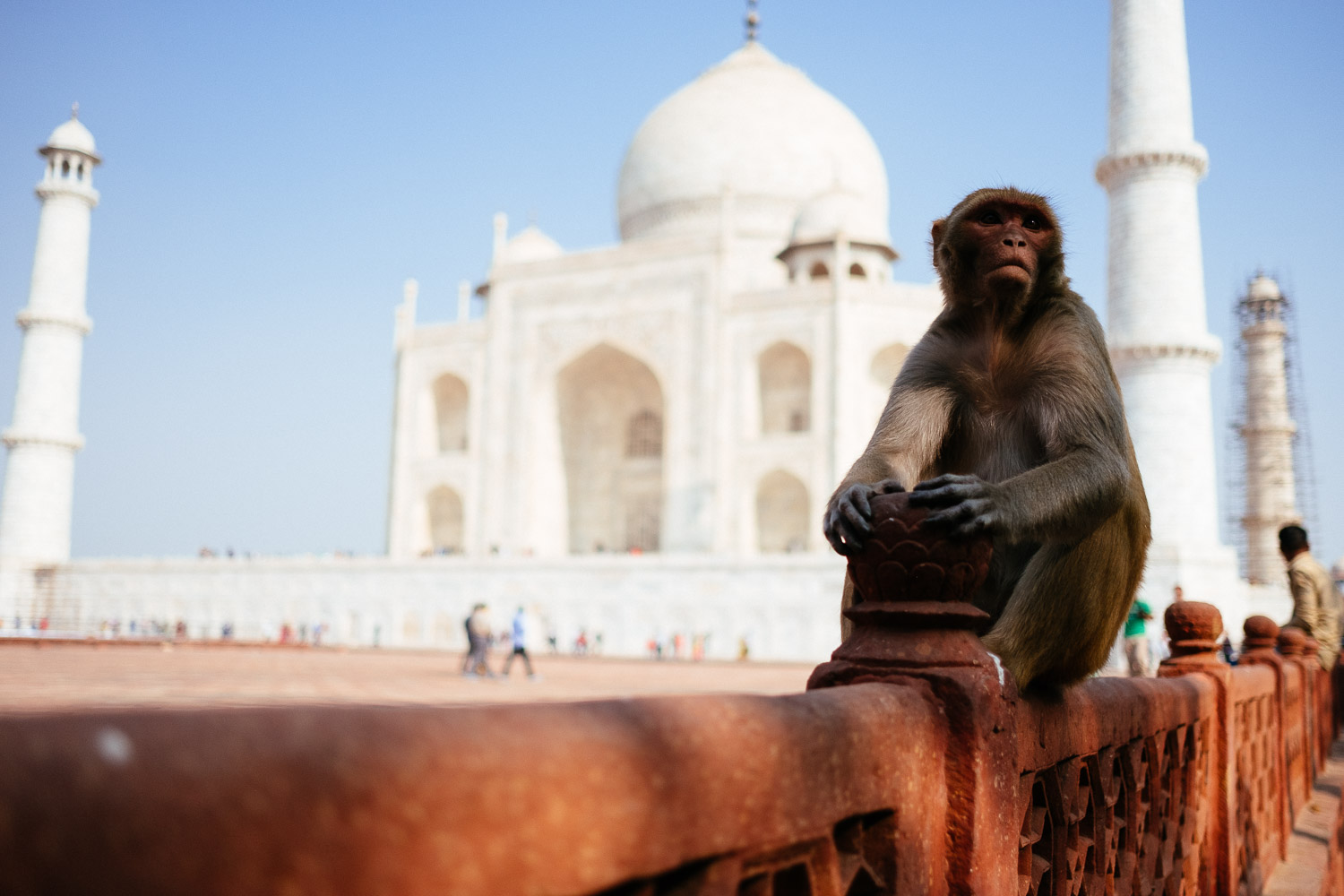 FUJIFILM X-Pro2 (14mm, f/4, 1/1000 sec, ISO200)
FUJIFILM X-Pro2 (14mm, f/4, 1/1000 sec, ISO200)
There are places one should visit at least once in his lifetime. Like the Grand Canyon or the Taj Mahal. The difference is that the Taj is made by men.
There are many fantastic examples of what nature is capable of. You can find them anywhere in the world. Impressive mountains, volcanos, canyons, glaciers, deserts, waterfalls, fjords, … There is hardly a country in the world without at least one natural wonder. Far less countries have man-made wonders. India might be a poor country but it has many and the Taj Mahal is the most iconic of them all.
 FUJIFILM X-Pro2 (23mm, f/8, 1/280 sec, ISO200)
FUJIFILM X-Pro2 (23mm, f/8, 1/280 sec, ISO200)
But before I start to talk about the how the Taj Mahal works its magic on every visitor I have to mention one thing. To get there is no fun. Agra is an ugly city, the traffic is even madder than in the rest of India the closer you get to the entry gate the worse it gets.
To safe the Taj Mahal from pollution it is not allowed to go straight there with car, bus or motorcycle but – worry not – you don’t have to walk. There is a myriad of electric three-wheelers, rickshaws, horse- and even camel-drawn coaches to get you there. Sounds convenient but the problem is that as soon as you enter the parking lot your car is surrounded by three-wheelers. It’s almost scary to leave the car. What makes things worse of course is if your skin is white. You are the prime target. But I recommend to jump into a three-wheeler as soon as the price is settled because you will be surrounded by sellers that try to sell you all kind of things. It is a physical experience that I’m still not used to after all those trips to India. They don’t touch you but there is no sense for personal space. This is the first time when you appreciate ruthless driving because it gets you away from the sellers quickly.
But it’s not over there. There are the cash registers where hundreds of people are lined up to buy their tickets. Luckily there are cash registers for foreigners where the waiting line is much shorter. It feels not right to use a different queue to get the ticket and later to enter the building but it gets you away from all the guides who are even more persistent than the sellers. The fact that you pay 25 times more for your ticket than local visitors helps a little but it still feels awkward to pass them by.
 FUJIFILM X-Pro2 (14mm, f/9, 1/640 sec, ISO200)
FUJIFILM X-Pro2 (14mm, f/9, 1/640 sec, ISO200)
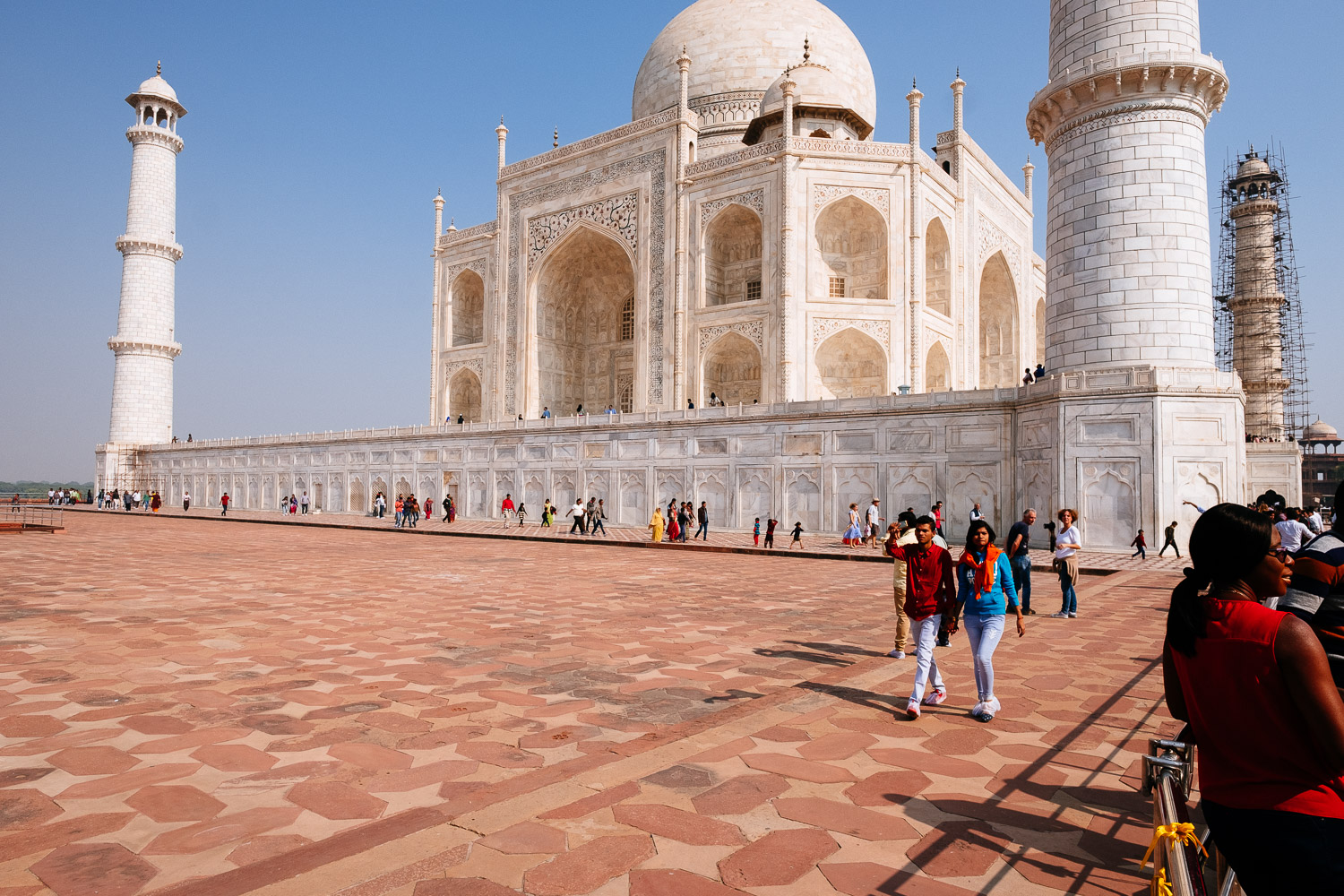 FUJIFILM X-Pro2 (14mm, f/8, 1/750 sec, ISO200)
FUJIFILM X-Pro2 (14mm, f/8, 1/750 sec, ISO200)
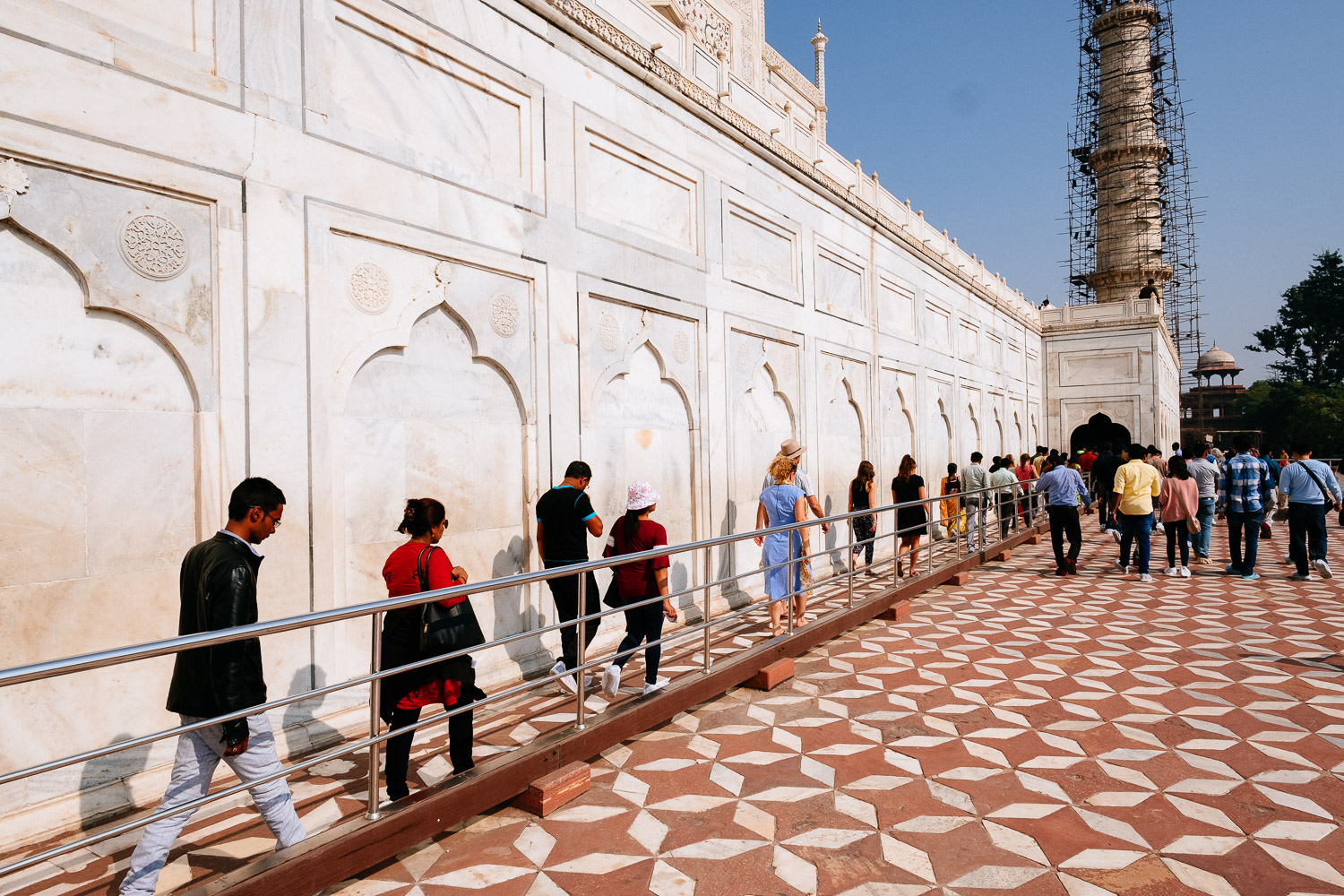 FUJIFILM X-Pro2 (14mm, f/8, 1/1250 sec, ISO200)
FUJIFILM X-Pro2 (14mm, f/8, 1/1250 sec, ISO200)
As soon as you pass the airport like security checks you enter a different world. Despite thousands of visitors it is much quieter and much more peaceful. You soon forget the hectic outside the compound. I know that all those sellers/guides/drivers just want to make a living in a country where most people have no income at all but I think that the Ministry of Tourism should try to find a solution. Some tourist might be scared off by the intimidating mass of people at the entry gates of the Taj Mahal or other attractions.
Maybe it sounded a bit too negative but everyone who ever visited one of those places in India knows it’s true. Don’t be put off though it’s worth it. OK now I said it and we can move on.
Once behind the entry gate it is surprising how thousands of tourists almost disappear in the huge areal. Not exactly disappear but you got the picture. Beside the place directly behind the entry gate where you first see the Taj Mahal in its unbelievable beauty there will be plenty of room around you. And at the place behind the gate you will still have goosebumps because of the almost ethereal experience. Thousands of pictures will be taken on this spot but no picture can give you even an idea of the experience. It’s like standing at the Grand Canyon compared to looking at a photograph of the Grand Canyon. It’s almost pointless to take a picture but of course we all must do it because we want save this precious moment forever. Here is the shot taken from inside the gate:
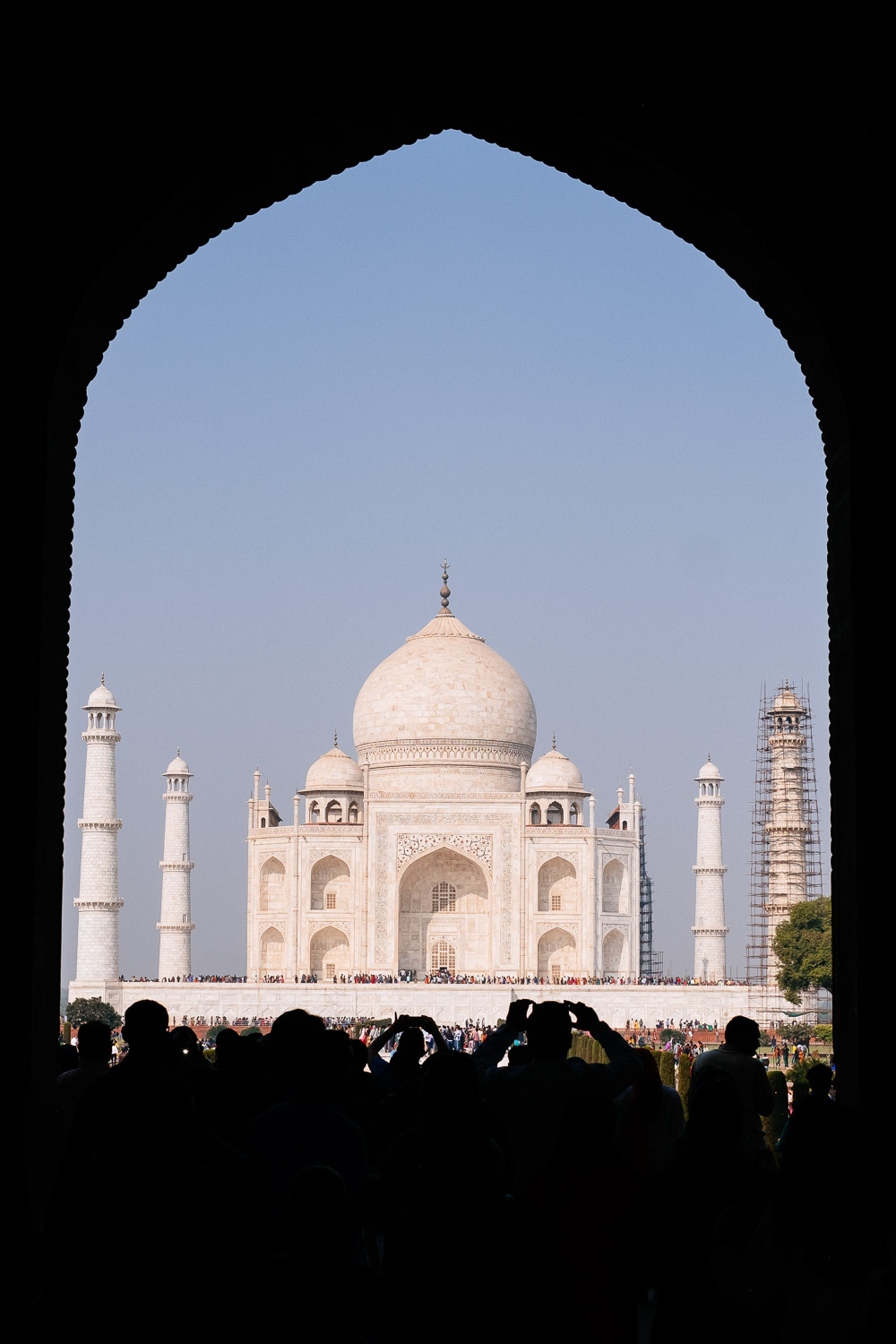 FUJIFILM X-Pro2 (35mm, f/5.6, 1/1000 sec, ISO200)
FUJIFILM X-Pro2 (35mm, f/5.6, 1/1000 sec, ISO200) FUJIFILM X-Pro2 (35mm, f/8, 1/800 sec, ISO200)
FUJIFILM X-Pro2 (35mm, f/8, 1/800 sec, ISO200)
 FUJIFILM X-Pro2 (35mm, f/1.4, 1/8000 sec, ISO200)
FUJIFILM X-Pro2 (35mm, f/1.4, 1/8000 sec, ISO200)
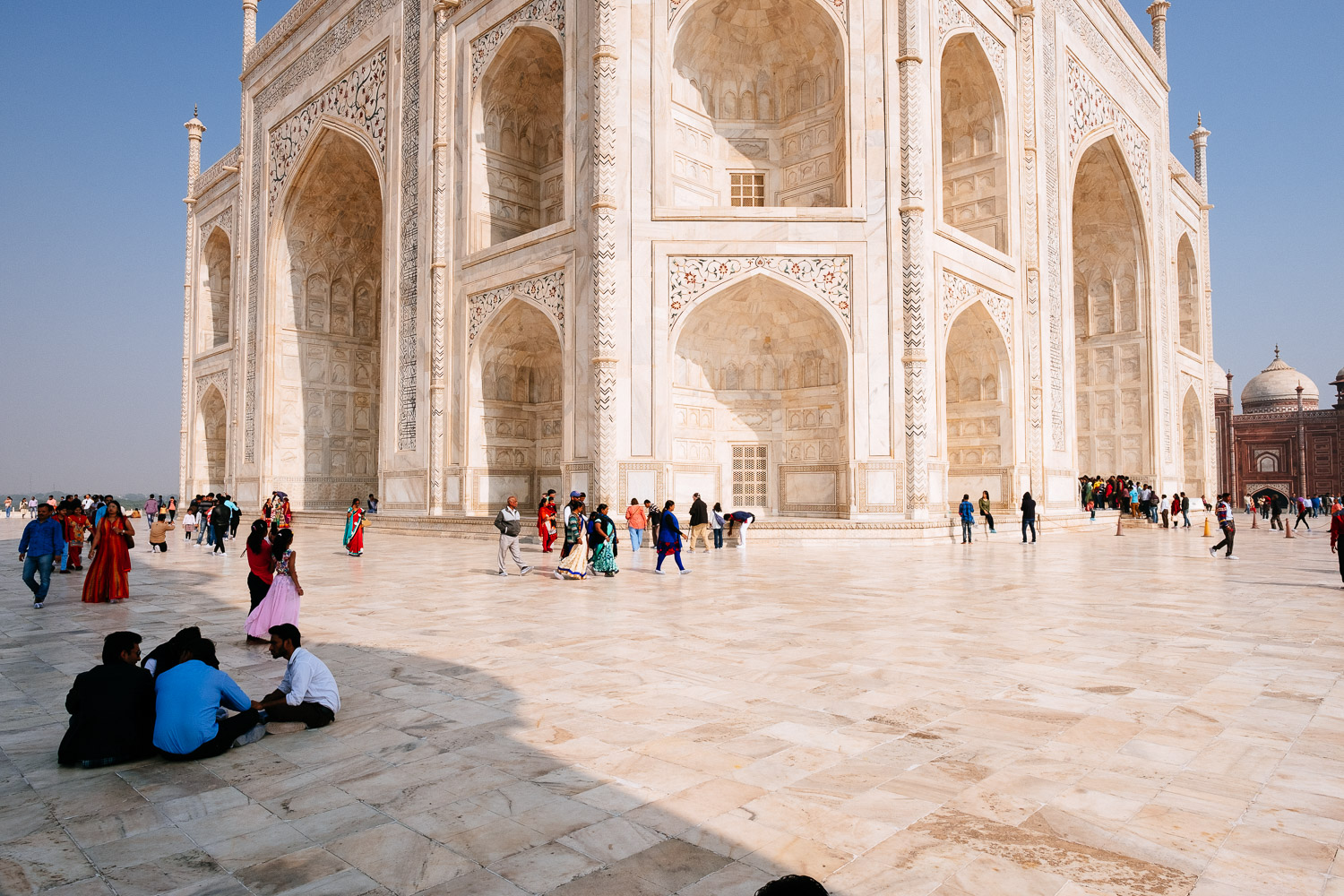 FUJIFILM X-Pro2 (14mm, f/8, 1/1000 sec, ISO200)
FUJIFILM X-Pro2 (14mm, f/8, 1/1000 sec, ISO200)
 FUJIFILM X-Pro2 (14mm, f/9, 1/550 sec, ISO200)
FUJIFILM X-Pro2 (14mm, f/9, 1/550 sec, ISO200)
I think I should explain the title. Prime time here stands for the lenses I have brought to India this time. On my last visit I took nothing but the XF 18-55 OIS (the kit lens) and my all time favourite Fuji lens the XF 14/2.8 R. This time I returned to all primes lens solution. Not that I wasn’t happy with the kit lens but since I got the XF 23/2 WR I now saddled to the following set of lenses:
- XF 14/2.8 R
- XF 23/2 WR
- XF 35/1.4 R
To me this set is the better option not only because image quality is better but most of all because the excellent XF 35/1.4 R allows me to play with the depth of field and because of the that the small primes feel so much better on my X Pro-2 than the zoom. But the main reason really is the XF 35/1.4 R. For a long time I replaced it with the XF 27/2.8 pancake but the pancake is a much slower lens and it has no aperture ring so when I added the 23/2 I also returned to the 35/1.4. For me that is the perfect set. A super wide angle, a classic (35mm FF) lens and a standard lens that works perfect per portraits or to compress a scene a little bit while it is still wide enough to cover a certain area.
I’m always surprised about the nice slightly blurred background I got even if my main subject is farther away like in the image below. The effect is subtle but it clearly adds to the shot. Shooting at f1.4 in the bright daylight in India only works thanks to the electronic shutter of the X Pro-2.
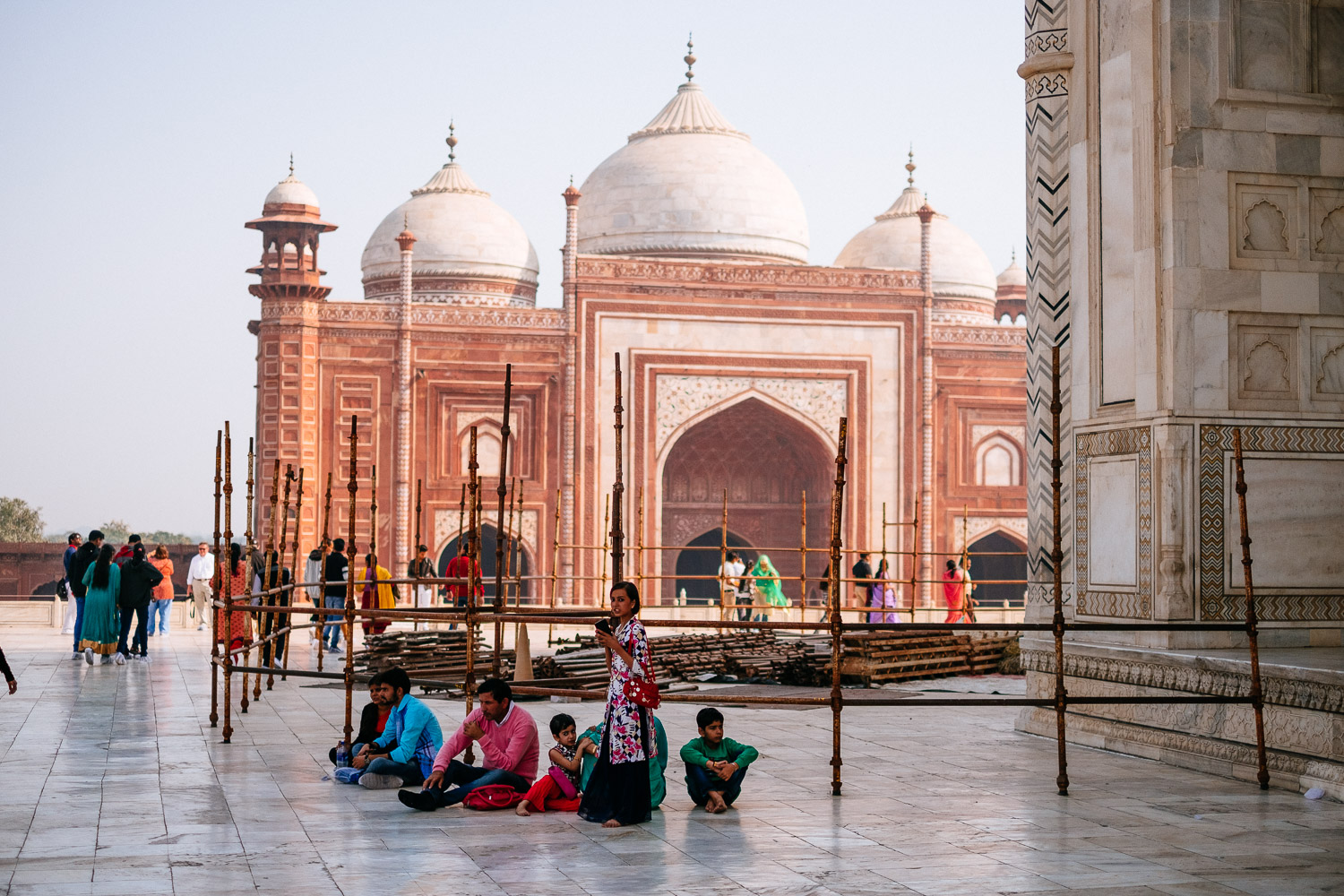 FUJIFILM X-Pro2 (35mm, f/1.4, 1/11000 sec, ISO200)
FUJIFILM X-Pro2 (35mm, f/1.4, 1/11000 sec, ISO200)
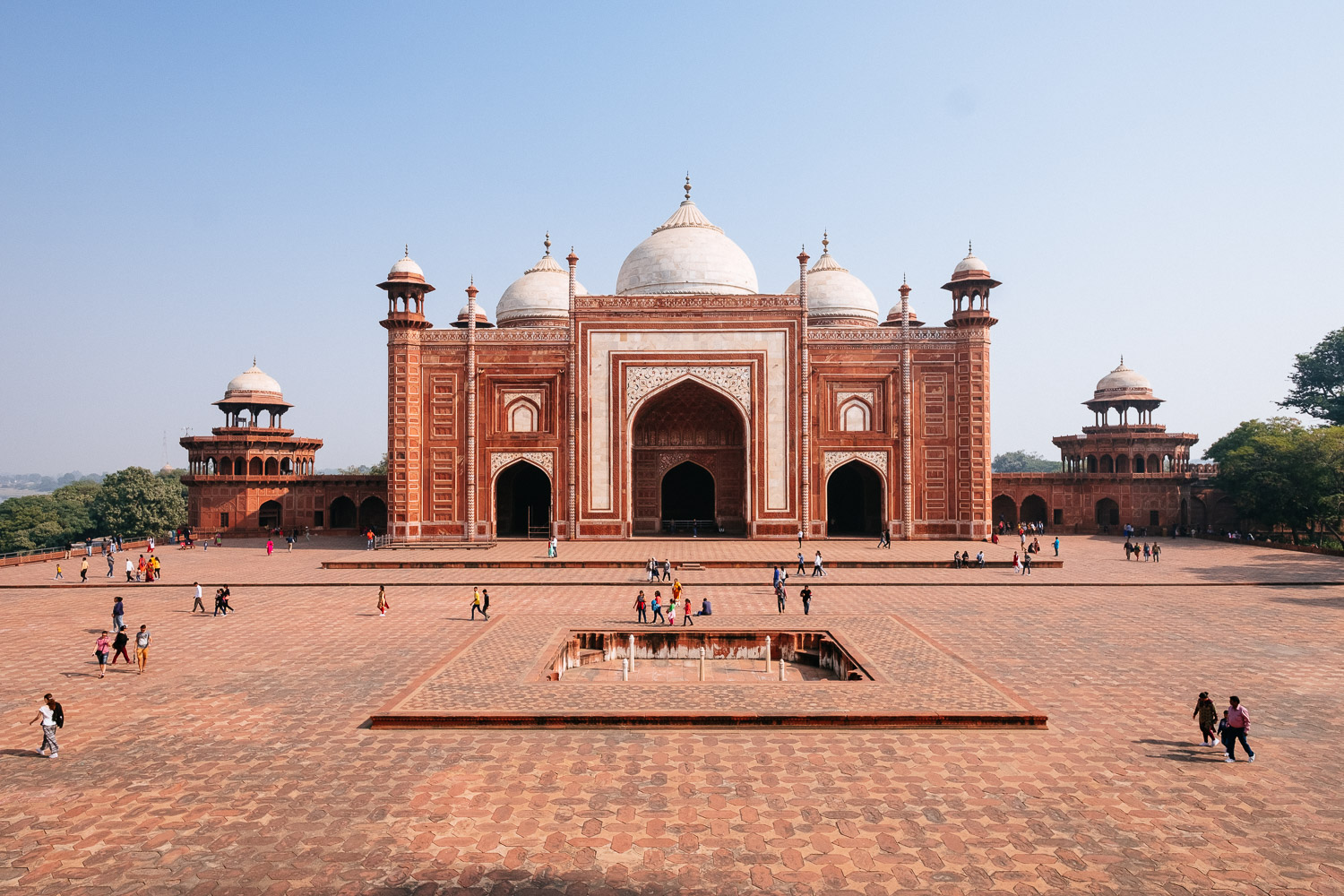 FUJIFILM X-Pro2 (14mm, f/8, 1/600 sec, ISO200)
FUJIFILM X-Pro2 (14mm, f/8, 1/600 sec, ISO200)
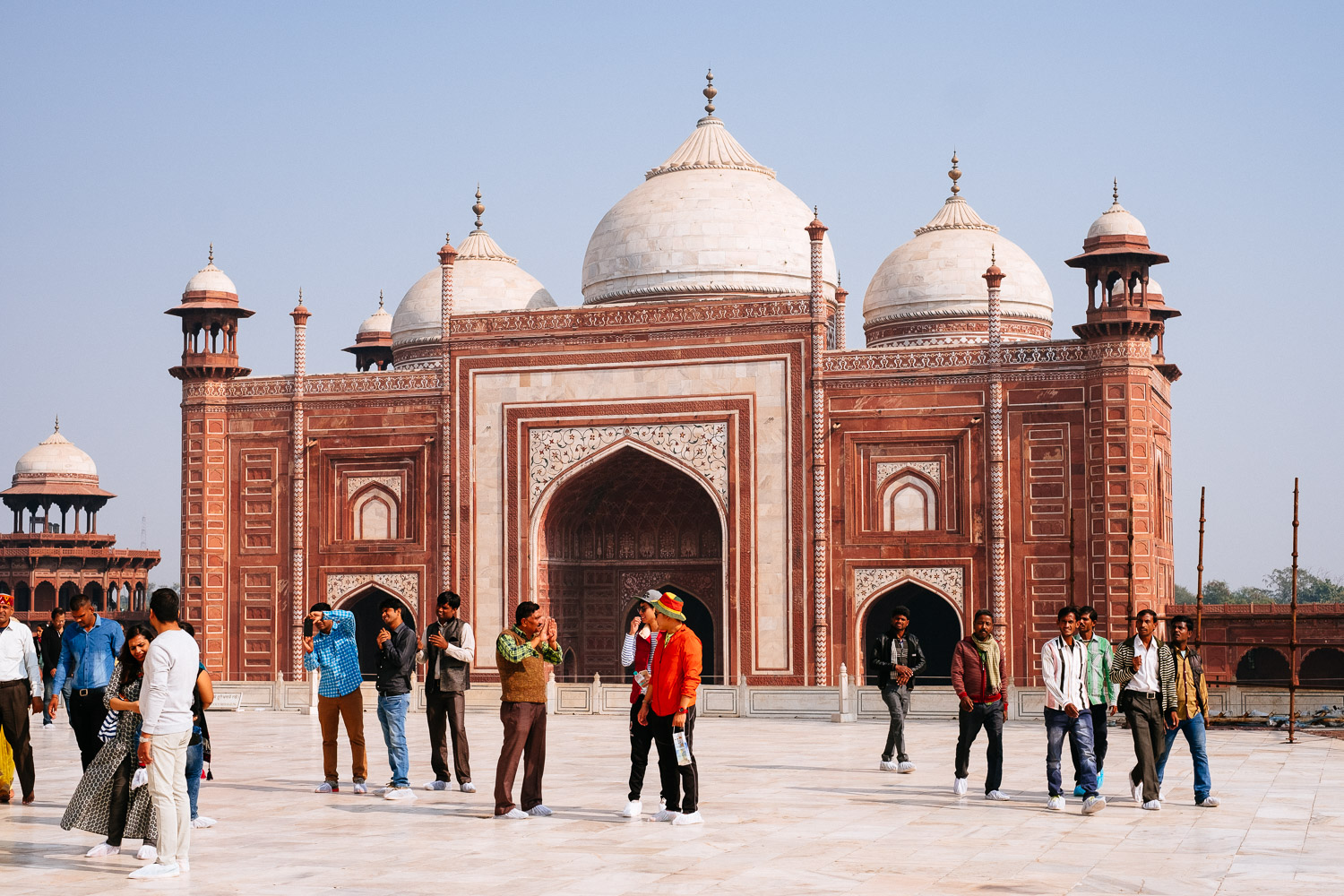 FUJIFILM X-Pro2 (35mm, f/5.6, 1/1250 sec, ISO200)
FUJIFILM X-Pro2 (35mm, f/5.6, 1/1250 sec, ISO200)
 FUJIFILM X-Pro2 (23mm, f/11, 1/240 sec, ISO200)
FUJIFILM X-Pro2 (23mm, f/11, 1/240 sec, ISO200)
 FUJIFILM X-Pro2 (14mm, f/11, 1/280 sec, ISO200)
FUJIFILM X-Pro2 (14mm, f/11, 1/280 sec, ISO200)
I took some of my favourite shots of the Taj Mahal this time. Not because of the lenses but because of the softer light of early December and because of the fact that I spent more time there than before. The weather was very pleasant, it was warm but not hot and humidity was lower than usual too. It felt like a nice summer day at home.
Only when you take your time you start to discover new viewpoints. Like the one below. The Taj Mahal is nothing but a gigantic tomb but on one side there is a mosque made of red sandstone. To keep the symmetry there is an exact copy of the mosque on the other side of the Taj Mahal. This building has no function but its huge arches offer the perfect frame for the Taj. It was not possible to include the minarets in this shot but the Taj Mahal such an iconic building that it doesn’t matter if the minarets are visible or not. You still can’t confuse it with any other building of the planet.
It is my favourite shot of the day. I recommend to click on the picture to see the larger version. That way you will see all the people standing on the platform of the building. It gives an idea about the size of the building and the height of the platform that is also built from white marble.
 FUJIFILM X-Pro2 (14mm, f/4, 1/1000 sec, ISO200)
FUJIFILM X-Pro2 (14mm, f/4, 1/1000 sec, ISO200)
 FUJIFILM X-Pro2 (23mm, f/4, 1/125 sec, ISO1600)
FUJIFILM X-Pro2 (23mm, f/4, 1/125 sec, ISO1600)
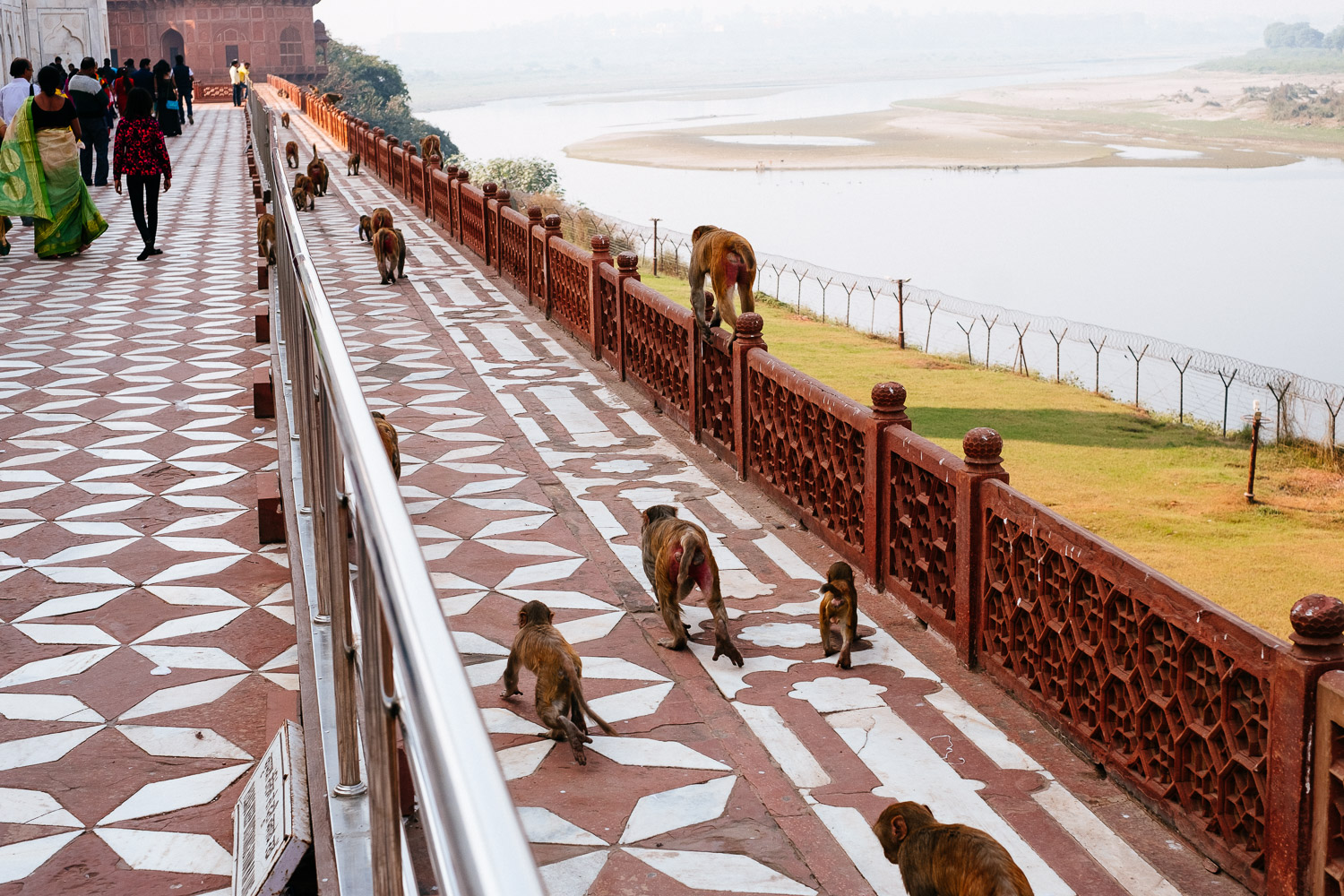 FUJIFILM X-Pro2 (35mm, f/5.6, 1/420 sec, ISO200)
FUJIFILM X-Pro2 (35mm, f/5.6, 1/420 sec, ISO200)
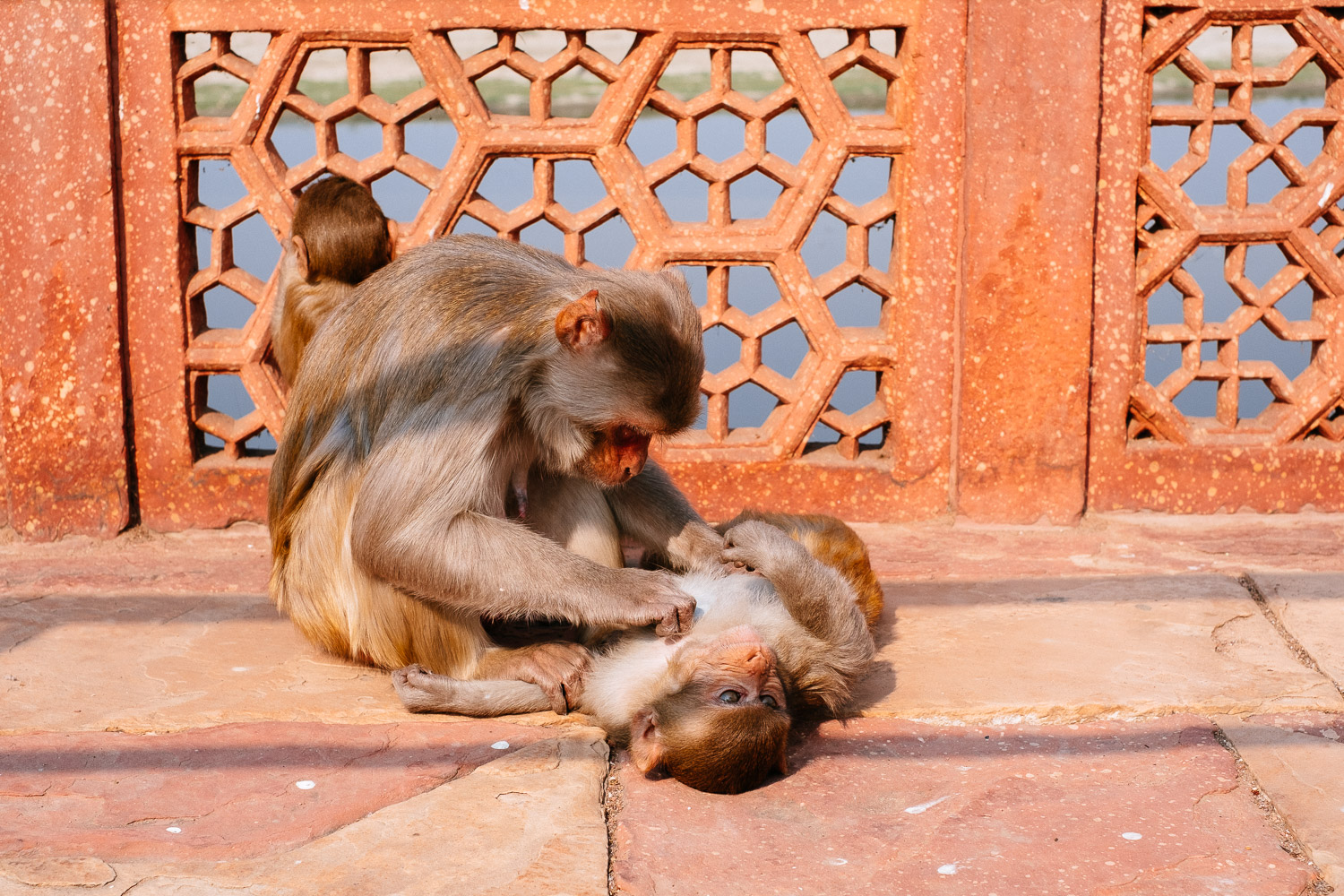 FUJIFILM X-Pro2 (35mm, f/6.4, 1/640 sec, ISO200)
FUJIFILM X-Pro2 (35mm, f/6.4, 1/640 sec, ISO200)
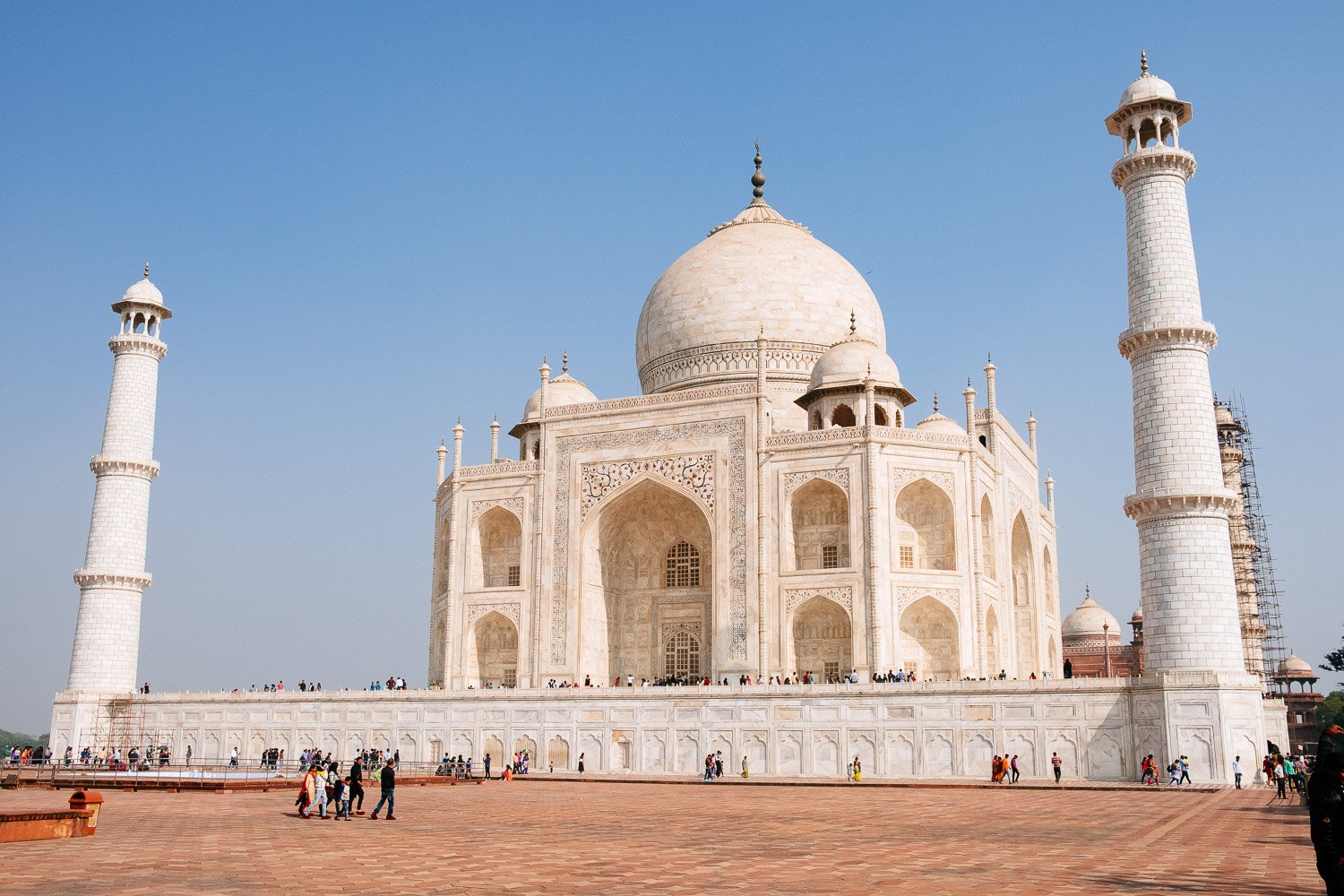 FUJIFILM X-Pro2 (23mm, f/8, 1/900 sec, ISO200)
FUJIFILM X-Pro2 (23mm, f/8, 1/900 sec, ISO200)
This was my third visit so far but I’m afraid it will not be the last. I have to see it again. Why? Because it is one of the most beautiful buildings of the world.
But there is another very good excuse to come here again. If you look at the shot above you see that the main building is yellowish while the minarets are perfectly white. Thanks to the polluted air in India the white marble of the Taj Mahal has turned yellow over the years. Now the restoration of Indias most important tourist magnet has started and soon the Taj Mahal will shine as white as it was when it was new almost 400 years ago.
A new, perfect white for another 400 years of goose bumps.
PS: One final word about the lenses. The 14mm and the 35mm both have an excellent reputation but the XF 23/2 WR is discussed much more controversial on the internet. I have extensively shot the lens in the real world and I can say that this lens is as sharp as it gets. The image is sharper and clearer than what you get from the zooms (18-55 or 10-24) plus you still have to option to nicely blur the background if you want like in the monkey shot below.
Yes the lens is slightly soft wide open and at close distance. So if you plan to shoot wide open and up close all the time this is not your lens but I did not hesitate to take below shot wide open to get the desired effect. It’s not possible to get this image with the zooms and I doubt that the result would have been any better with the XF 23/1.4 R.
I think I finally found my perfect set of lenses for my trips to Asia.

